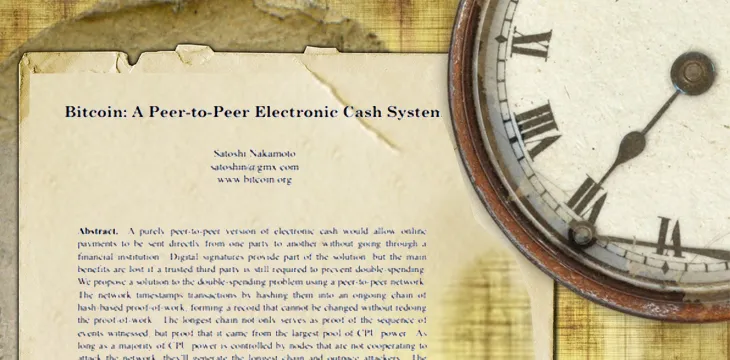|
Getting your Trinity Audio player ready...
|
In the latest episode of “Theory of Bitcoin: The White Paper” hosts Dr. Craig Wright and Ryan X. Charles look at several ways Bitcoin is—and isn’t—like the money we use today.
Which would confirm faster on the BSV network: a thousand one-dollar transactions, or one thousand-dollar transaction? Is it more private to keep your Bitcoins in multiple addresses, and does doing so present any disadvantages? Should wallet software have a feature to combine outputs at certain points to avoid Bitcoin amounts being splintered into smaller and smaller amounts? You’ll hear answers to all these questions and a lot more.
Compared to more recent conversations about Bitcoin’s evolution into an unboundedly-scaling data platform, this episode is more of an “old school” episode that looks mainly at Bitcoin’s monetary use cases.
Charles asks why Bitcoin is based on a ledger of inputs and outputs, rather than having an account-like structure. Dr. Wright explains that there are legal reasons for this, and also makes Bitcoin a “direct commodity item.” He likens it to small amounts of a certain commodity, such as grains of rice, into envelopes. The envelope can be opened and its contents distributed into other envelopes that contain the amounts desired for use.
In Bitcoin’s case, the “grain of rice” unit is 0.00000001 Bitcoin, later named a “satoshi.”
There’s an interesting discussion about ownership and the use of “coin mixers” in Bitcoin, ostensibly to boost anonymity. Dr. Wright is well-known for his disdain for coin mixers, as well as his insistence that they are both criminal, and unfeasible.
He gives the example of the ancient Roman legal principle of “commixtio,” or “the mixture of things.” It concerns ownership status of items when resources are put into a common pool. If the origin of the mixed resources in the pool could be traced back to their contributor, they would be considered the responsibility of that contributor. If not, then ownership was considered common.
This is important when considering ownership of Bitcoin outputs—ownership does not change even if a Bitcoin amount is stolen. Therefore, if Bitcoin outputs are mixed and cannot be traced back to their contributors (yet the stolen property’s outputs are known), then any mixed amount containing that stolen output would become the responsibility of whoever received it—putting them on the hook, as Dr. Wright says, for returning the entire amount and not just the stolen portion of it they’d received. Effectively, he says, coin mixer users would be “subsidizing criminals,” something no-one wants to do.
Could there be such thing as a “legal mixer” at some point? Charles asks. “Yes, it’s called a bank!” says Wright.
Banks are essentially fiat currency “mixers” (though for a different purpose) since they take small deposits of money and pool them for larger uses. There’s a short discussion on how the old Bitcoin cliché “Be your own bank” is false, or at least superficial.
Bitcoin and privacy
The two then move onto the next section of the Bitcoin white paper, which concerns privacy. Dr. Wright describes real-world identities in Bitcoin as being “firewalled off from the public,” though it is still possible to trace (or at least, follow) Bitcoin amounts in a way that unmasks their ownership chain, and would allow investigators to follow a money trail without necessarily knowing everything about every individual along the way.
“Privacy” in Bitcoin is more about being able to prove payment of something, without having to supply all your personal details. This absolves merchants and other recipients of the responsibility to hand over or store so much personal data on every customer, as is the case with today’s credit cards and other digital payment methods.
This is the only section of the Bitcoin white paper that mentions the word “anonymous,” which as Dr. Wright points out, can have many different meanings to different people.
Society can’t function if everyone is 100% anonymous, but nor can it function if everyone knows everything. There needs to be a balance, and today’s monetary/payment systems aren’t doing it well. But the answer isn’t to try and go all the way in the opposite direction, as some “privacy coins” have attempted.
While topics like privacy in Bitcoin didn’t need much more explanation, the section on coin splitting and combining is interesting from technical and legal viewpoints. Viewers will also get the usual serve of Dr. Wright’s views on coercion and equality, which regulars will find familiar but are always entertaining nonetheless. Overall it’s another worthy addition to this series of discussions on Bitcoin’s underlying principles, and well worth watching to complete the picture.
To watch previous episodes of the Theory of Bitcoin, check the Theory of Bitcoin: White Paper YouTube playlist here.

 09-01-2025
09-01-2025 





